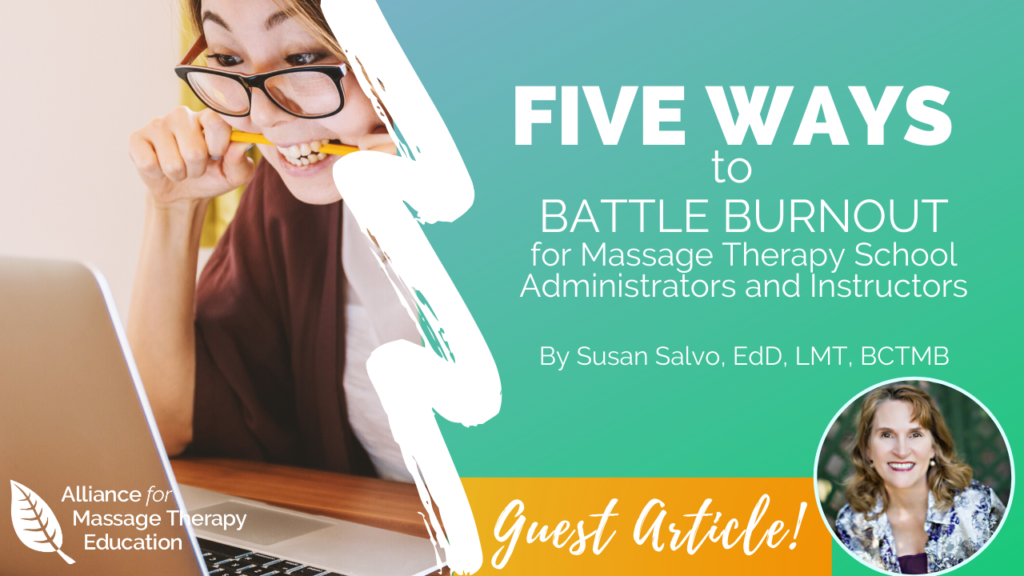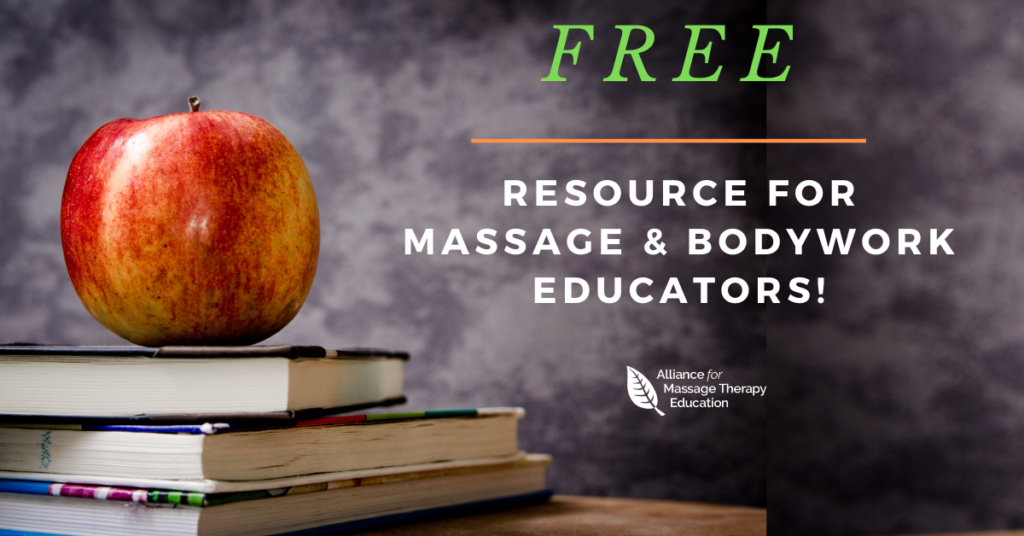
Education has been identified as the most stressful profession in the human service industry, making it a minefield for educator burnout. Burnout can manifest in several ways, including disinterest in work, boredom, sleep problems, restlessness, inability to focus, depression, lack of productivity, tardiness and absenteeism, decline of social skills, workaholism, and deterioration of professional boundaries. Stress and burnout not only impact personal health, but can also result in lower student achievement and higher costs to schools. In essence, stress is contagious.
Stress and burnout can be greatly reduced by self-care practices. The following five self-care practices are proven to help you accomplish this in the workplace. They may also improve your quality of life and your relationships outside of work. Just as stress is contagious, so are calmness and wellness.
1. Regular Physical Activity
One of the best burnout solutions is physical exercise. The benefits of improved physical condition and disease fighting have long been established, and its benefits for reducing stress and improving mental health and fitness are vital. Studies show that physical exercise reduces fatigue and improves alertness and concentration while decreasing tension and anxiety and improving mood, sleep, and self-esteem.
Tips:
- Look for opportunities to fit in activity, such as taking a walk after dinner instead of watching TV.
- Set aside specific times to make physical activity part of your daily or weekly routine.
- Physical activity with friends or family members can provide motivation, encouragement, comradery, and fun.
2. Proper Nutrition
Healthy eating and drinking habits are key to avoiding or beating back burnout. Proper nutrition helps your body function properly, supports tissue growth and repair, and supplies the energy you need to perform daily activities. Nutritional needs vary throughout your life, and factors such as age, activity level, and disease should be considered when planning your diet. For example, The Healthy Eating Plate, which was developed by the Harvard School of Public Health, can help you make good food choices .
Tips:
- Reduce sugary drinks and opt for water or other unsweetened beverages.
- Keep healthy snacks available at work for energy and to combat hunger.
- Plan your week’s meals ahead of time to avoid a quick unhealthy dinner when things get hectic.
3. Adequate Sleep
Sleep allows the body to rest, recharge, and heal from the day’s wear and tear. Adequate sleep is important for learning and memory, weight control, mood, health, and safety. Sleep deprivation contributes to slips/falls, errors in judgment, and road accidents. You should aim for 7 to 9 hours of sleep per 24-hour cycle. If you are already experiencing burnout, sleep may be an issue for you. There are many ways to help your body get back on track so you may fall asleep and stay asleep. Talking to your doctor first may help.
Tips:
- Turn off all electronic devices at least 30 minutes before falling asleep.
- Choose set times for waking up and going to bed. Establishing a routine will help your body adjust and fall asleep easier.
- Consult your physician if you are still having trouble with sleeping after developing better sleep habits. You may need a sleep study to determine if some other problem is causing your sleep issues.
4. Empathy
Empathy is the desire to understand what another person is experiencing without mistaking it for your own experience. When teachers are stressed, students experience or perceive ineffective teaching strategies, including unclear lesson instruction, ineffective classroom management, and a learning climate perceived as less engaging.
Practicing empathy can reduce burnout, reduce biases, promote emotion regulation, and reduce stress. When you are more empathetic, your students experience positive effects, such as quality classroom interactions, a motivating learning environment, and perceiving you as a more competent instructor.
Tips: Use the following strategies developed by Helen Reiss to nonverbally express empathy when communicating with others. Note that the first letter of each strategy combine to spell the word empathy.
- Eye contact. Make meaningful eye contact right away. Limit the amount of time looking at electronic devices such as mobile phones and smartwatches.
- Muscles of facial expression. Mimic the facial expressions of others.
- Posture. Use open body postures to express openness, approachability, and mutual respect. Face the person at his or her eye level. Your head should be erect or slightly side tilted to one side, with your shoulders back and hands apart. If you are sitting, place your hands on the arms of your chair. These open postures convey interest in and time for the person. Closed postures convey disinterest or even discomfort.
- Affect. Affect is expressed emotions. While listening to other people, label the emotion as best you can. Mental curiosity can be unconsciously sensed by others, which deepens empathy.
- Tone of voice. Note the person’s tone of voice, as this gives you an insight into what he or she is experiencing. It is often said the eyes are the window to the mind. Be aware of your tone of voice and modulate it in ways that convey warmth, curiosity, and concern.
- Hearing the whole person. Put all the information gathered into context—what is seen in the person’s face and body language, what is heard in the tone of voice. Is the student asking for clarity regarding an assignment? Is he or she expressing frustration about another student and just wants to vent? Or is a school policy inadvertently discriminating against people who are transgender?
- Your response. Before responding, take a moment to breathe and mentally acknowledge your own emotions. Then put them in check before formulating an appropriate professional response, especially if the person is pushing your buttons. Excessive emotion can blur boundaries, and nothing productive comes from fear and defensiveness. Now come back with responses ranging from a caring look if the student needs to vent; to further explanation if clarity on an assignment is needed (called proximal empathetic responses); to a change in policy that makes education more equitable for students in the LGBTQ community (called distal empathetic responses).
5. Mindfulness
Mindfulness is attention given to present moments characterized by curiosity, openness, purpose, acceptance, and engagement without judgment; the practice of bringing yourself into the present moment. Mindfulness helps regulate your emotions and reduce stress, which results in student wellbeing, improved teacher-student interactions, and more effective classroom management strategies.
Tips:
- Before work, mentally review what you think you will be doing that day, and remind yourself it may not happen that way.
- Do one thing at a time, and give it the full attention it deserves for as long as it deserves. Do not get distracted or allow yourself to be distracted. Evidence shows multitasking degrades performance on every task you try to juggle.
- Monitor your body occasionally. If present, release tension in your shoulders, face, hands, or back using gentle movements.
- When communicating with others, note interactions that are satisfying and interactions that are problematic. How can you improve the problematic ones? Be aware of people who relate to you in a passive or hostile manner. How might you approach them more effectively?
- Before you leave work, take a deep breath and review what you accomplished. Make a list of what needs to be done tomorrow, and then prioritize the list.
- When you arrive home, greet people mindfully. As soon as possible, take off your shoes and change into non-work clothes. This helps transition from work life to home life.
For more information on self-care strategies and how to battle burnout, visit Susan’s blog titled Massage Passport.
© Susan G. Salvo 2020 – Posted with Permission
About the Author

Susan Salvo, a native of Louisiana, has a doctorate in educational leadership from Lamar University and a master’s degree in instructional technology from McNeese State University. She graduated from the New Mexico School of Natural Therapeutics in 1983 and has been a massage instructor and active practitioner in Louisiana for over 35 years. Susan authors two widely used textbooks published by Elsevier, contributes scholarly articles for peer-reviewed journals, and conducts presentations at professional conferences across the country. She reviews case reports for the Massage Therapy Foundation, was a member of the Massage Therapy Body of Knowledge project, is a member of the Alliance for Massage Therapy Education, and serves as an expert witness for legal cases involving massage therapy standards of care. Susan’s writing, teaching, and research efforts focus on advancing the fields of massage, holistic health, and education.
Make sure you’re working smarter, not harder! Check out this free resource for therapeutic massage & bodywork educators: the AFMTE Self-Assessment Worksheets!

